|
This article is Part II of a four article series. Check out the first article here. |
 |
++Part 2++
Kiron is a non-profit organization that provides refugees with digital learning opportunities for academic, professional and personal growth. In April 2018 our management decided to transform our organization and to form cross-functional teams for evidence-based and user-centered collaboration; they asked me to facilitate the process of setting it all up. In this article I want to share my lessons learned and to inspire other organisations to increase their impact.
The Stem Cell
- „Stem cell, an undifferentiated cell that can divide to produce some offspring cells that continue as stem cells and some cells that are destined to differentiate (become specialized).“ – Encyclopedia Britannica
The stem cell meets for the first time in June 2018. It’s made up of 8 heads of functional teams, 3 leads picked by management to facilitate the three cross-functional teams or clusters (as we call them) and me as the groups facilitator.
Let’s recapitulate what our task is: a dozen people from different functional teams (and with expertise and work experience in very different fields) need to figure out a user-centered, evidence-based and self-organized way to collaborate together. We meet every 2 weeks for 2 hours. In the first session we each share our expectations, questions, anticipated challenges and align on our goals. Some people are quite skeptical about the intended organizational changes and in the beginnning there is no shared idea for how we should collaborate. The group is open, but depending on people’s previous working experience in Laloux’s orange, amber or green organizations people have very different models in mind for how collaboration should be organized. How do you find common ground?
Facilitating Change
- “What happens at the beginning of any creative process? Nothing! Creativity requires that we create space and wait for something to emerge.” – Otto Scharmer
In his book The Essentials of Theory U Otto Scharmer, Senior Lecturer at MIT and founding chair of the MIT IDEAS program for cross-sector innovation, shares some great practical advice for how to approach the facilitation of change:
“Much of the conventional language and toolkits around managing change turn out to be partially useful at best. For example, consider the term “driving change.” When have you asked your family how much they like you to “drive” their web of relationships from one state to another? Good luck with that. The reality of leading profound change has little to do with one person “driving” the change of another. It is the wrong metaphor, the wrong approach. What I feel may be more useful is the metaphor of the farmer.”
Scharmer uses the metaphor of a farmer’s field: one can see what’s growing above the surface, but what’s beneath the surface is invisible: the quality of the soil.
“[J]ust as the farmer cannot “drive” a plant to grow faster, a leader or change maker in an organization or a community cannot force practical results. Instead, attention must be focused on improving the quality of the soil. What is the quality of the social soil? It is the quality of relationships among individuals, teams, and institutions that give rise to collective behavior and practical results.”
We can see the practical results that people accomplish, but what we can’t see are people’s intentions and the quality of relationships that produce these practical outcomes. To improve cross-functional collaboration means to improve the quality of relationships among individuals. That is my primary role as a facilitator. To create a safe space for people to listen, learn and better understand each other. It’s about resolving fears, framing challenges positively, pointing out overlaps, creating understanding and trust. It means to raise the quiet voices, tune down the loud ones and step back when someone wants to take the space.
Intention
- “Energy follows attention. Wherever you place your attention, that is where the energy of the system will go. “Energy follows attention” means that we need to shift our attention from what we are trying to avoid to what we want to bring into reality.” – Otto Scharmer
Scharmer stresses the importance of a facilitators intention, the inner place from which one operates. The question is if you intend to advance yourself and stay in control or if you want to contribute to the whole? He differentiates the eco system from the ego system. Laloux also talks about how we often hide behind professional masks at work. But if who we are as a person has so much impact on how effective we are at work why do we only show up with half of ourselves? So let me take down my mask and share the inner place from which I operate:
My father died when I was one year old. When you are confronted with death so early in life it makes you think about what you want to do with the little time you have on this planet. I found great inspiration in the United Nations Global Goals (and their underlying values) to end poverty, protect the planet and ensure prosperity for all. I try to live those values through my actions - especially the way I treat others and how I earn and spend my money.
My path has lead me from web development to storytelling, filmmaking, (social) entrepreneurship, sustainability, gamification, product development, (design-based) research and (blended) learning. As a result I understand the language of many different professions. I have found that most people are not divided by values or goals, but merely by words and trust.
I believe that the great challenges of our time can only be overcome when people with different skills find productive ways to learn and act together. Or in the words of Kenneth H. Blanchard: „None of us is as smart as all of us.“
It’s with those intentions that I approach almost anything in life.
Co-creation & Prototyping
- “The aim of co-creating is to build landing strips for the future through prototypes that allow us to explore the future by doing. The prototypes evolve based on the feedback they generate.” – Otto Scharmer
Steve Blank is a serial entrepreneur and adjunct professor at Stanford university; he developed the customer development method that launched the lean startup movement. Customer development is a method for building startups by assuming that you don’t know what a customer wants or needs and that you have to co-create your business together with them to ensure that there’s a good fit between your offer and the market. This is the search phase of your business, in which you build a small version of your offer, a minimum viable product (MVP); the MVP is shown to customers and improved based on their feedback until you have reached product-market-fit. Product-market-fit “is the degree to which a product satisfies a strong market demand”. When you have reached that point the search phase is over, because you have found a business that works. You stop being a startup and start being a company. You also switch from searching for a business that works to executing one. It’s important for a startup to not scale before having reached product-market-fit. A study with more than 3.200 startups has shown that 70% of all startups die because they scale prematurely.
These concepts are also common sense. With a physical product product-market-fit and premature scaling are easy to grasp. Let’s go back to the inventor of the chair (whoever that was). If that chair is not, yet, holding a persons weight - why would you try to produce more of those chairs and spend any resources on marketing? Of course you keep on working on the chair until it holds a persons weight (= product-market-fit) and then you try to bring it to more people. With a physical product that’s easy to see. With a digital product it becomes more complicated - when is it valuable and stable enough? With a new way of working together it’s a nightmare, because how people collaborate is quite elusive and so little of it is tangible. But let’s give it a try anyway!
We apply these concepts from the field of entrepreneurship to our case: we, the stem cell, are the product and the rest of the organization is the market. All the questions and feedback that we had gotten from functional teams regarding our intended organizational transformation indicate that we have not reached product-market-fit (= not enough employees liked the proposed way of working together) and shouldn’t scale to three cross-functional teams straight away. Similar to a startup we, the stem cell, have to search for and find a way to collaborate together that works. We have to build a minimum viable product and improve it based on feedback from all other teams until we find product-market-fit. We have to make our case to be accepted by the system.
Growth Hacking as MVP
- "It isn't enough to pick a path—you must go down it. By doing so, you see things you couldn't possibly see when you started out; you may not like what you see, some of it may be confusing, but at least you will have, as we like to say, "explored the neighborhood." The key point here is that even if you decide you're in the wrong place, there is still time to head toward the right place.” – Ed Catmull
Fairly early on I identified the growth hacking methodology as a good starting point for us. Not to impose my thinking onto the organization and the stem cell, but because I thought that elements within the methodology would help to structure our thinking and trigger the right discussions. Growth hacking forces you to think about which of your actions are likely to lead to the highest possible impact with the lowest possible effort. And that’s exactly what we needed.
A lot of tech companies like Facebook, Google, Airbnb, and others are using growth hacking. It has many overlaps with customer development and the lean startup methodology. Steven Dupree calls it “the scientific method applied to KPI’s.” Instead of a scientific experiment with the goal to contribute to research people come up with ideas for experiments that improve the key performance indicators of a company. The most promising experiments are executed with as little resources as possible. If an experiment is not successful it is discarded, but if it is successful further experiments are carried out that build on the previous one.
There are a lot of existing resources out there on growth hacking and a active community that shares best practices. This means that we don’t have to start from scratch, but have to “merely” adapt existing processes, templates and best practices to our needs. This is easier said than done, because like so many other methodologies growth hacking has it’s origins in the for-profit world and doesn’t take into account some of the variables relevant in the non-profit sector.
Playing the Game vs. Defining the Rules

We start out with existing experiment doc templates in online documents and spreadsheets (we use a combination of this, this and this one). The experiment doc is a more detailed description of an experiment idea and contains the objective, hypothesis, experiment design and resource estimation for an experiment. The backlog is a list of all planned experiments that can be prioritized based on the resources an experiment costs and how much impact it is likely to have. I’ll share more details later on!
We don’t want to start with a more powerful project management software to keep the technical barrier low, ensure that we focus on the content (not the tool), can make changes more easily and just get started to prototype. With the experiment doc and the backlog as our minimum viable product we learn by doing. We acquire experiment ideas from people and prioritize them within the backlog. We always distinguish playing the game (= using the template and the backlog) from defining the rules (= adapting both to our needs).
I also send out regular video updates (screencasts) to all employees to show and explain our meeting slides, what we are building and ask them to get involved and to give feedback.

Based on everyone’s input we improve the experiment doc template and the backlog.

Feedback is always a great opportunity to listen, learn and improve. Making changes based on someone’s feedback let’s that person experience self-efficacy, involves them and creates buy-in. That’s how a movement slowly grows.
Through the acquisition of experiment docs and regular video updates we make sure that we aren’t a black box, stay open to others, involve them and bring the discussion beyond the stem cell to everyone in the organization. And most importantly: the experiment docs get everyone to think about the impact their idea could have and if that’s worth the resources it costs.
Our Pitch
This is the pitch that we come up with, starting with the process:

The cluster leads gather ideas from anyone at Kiron based on objectives set by management. The incoming experiments are prioritized and the most promising experiments are executed by a small team of experts. After the experiments have run for a while we analyze how much impact they have on our KPI’s. Results are discussed and learnings are shared with the whole organization. The learnings lead to improvements and inspire new ideas.
These are the decision-making criteria we use for prioritization of experiments:

As a cross-functional team we think about the impact an idea will have on our students, how many resources it’s going to take, how comfortable we are that it will work and if it’s connected to project deliverables we agreed on with one of our donors. Impact, confidence and resources are common criteria within the growth hacking methodology, but the projects criteria is specific to the non-profit context. In addition to the users needs non-profits often need to integrate the donor perspective into their decision-making process.
Within the cluster we go through all the experiments that have been handed in, every person in the team estimates how much an idea contributes to our criteria from 1 (= low) to 5 (= high). We calculate the averages and create a total. The best ideas win!

In the example above we would execute the experiments 1 and 2, might do experiment 3 at a later point in time and not execute the experiment 4 at all. Because people tend to like their own idea the most these criteria help to discuss ideas in a more neutral manner.
After three months of meeting every two weeks to figure out how we can collaborate together the atmosphere changes and people get excited. The quality of the relationships, the social field, improves - there is more trust between people within the stem cell.
One example for how trust and the quality of relationships can lead to better collaboration: in one of our meetings someone in the group asks what the product team is planning to develop in the near future, which is something they have written down on the product roadmap. It turns out that the product roadmap isn’t visible to other teams. It’s not like the product team doesn’t want to share the product roadmap, it’s just that they have never been asked and others don’t have access to the tool they are using. Together we look at the roadmap and discuss it. Today it’s an integral tool for cross-functional alignment.
While some members within the stem cell were skeptical in the beginning, they now become strong advocates for cross-functional work and promote the idea within their functional teams. People from “outside” the stem cell now want to join, bring in their ideas and contribute. We start meeting weekly instead of bi-weekly and people keep asking: When do we finally split up in three cross-functional teams?
About
Björn Lefers works at the intersection of sustainability and education; education to better prepare people for a rapidly changing world and sustainability to make sure that world still exists when they’re finished. You can find him on LinkedIn.
|
This article is Part II of a four article series. Continue reading the third article here. |
 |

